- News
- Reviews
- Bikes
- Accessories
- Accessories - misc
- Computer mounts
- Bags
- Bar ends
- Bike bags & cases
- Bottle cages
- Bottles
- Cameras
- Car racks
- Child seats
- Computers
- Glasses
- GPS units
- Helmets
- Lights - front
- Lights - rear
- Lights - sets
- Locks
- Mirrors
- Mudguards
- Racks
- Pumps & CO2 inflators
- Puncture kits
- Reflectives
- Smart watches
- Stands and racks
- Trailers
- Clothing
- Components
- Bar tape & grips
- Bottom brackets
- Brake & gear cables
- Brake & STI levers
- Brake pads & spares
- Brakes
- Cassettes & freewheels
- Chains
- Chainsets & chainrings
- Derailleurs - front
- Derailleurs - rear
- Forks
- Gear levers & shifters
- Groupsets
- Handlebars & extensions
- Headsets
- Hubs
- Inner tubes
- Pedals
- Quick releases & skewers
- Saddles
- Seatposts
- Stems
- Wheels
- Tyres
- Health, fitness and nutrition
- Tools and workshop
- Miscellaneous
- Buyers Guides
- Features
- Forum
- Recommends
- Podcast
TECH NEWS
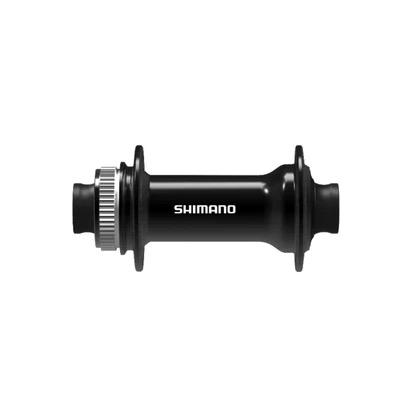 HB-TC500-15-B-shic6-primary1-4550d0e
HB-TC500-15-B-shic6-primary1-4550d0eIs Shimano abandoning cup and cone hubs in favour of sealed cartridge bearings?
Coinciding with the launch of the new CUES drivetrain family - the brand-new mid-tier, cross-compatible drivetrain system - Shimano has quietly launched some new hubs as well. And not just any hubs, but hubs with sealed cartridge bearings.
Shimano is a brand that has been firmly standing behind the cup and cone bearing system, and the introduction of the new hubs - although not the first featuring sealed bearings - is aimed at the mid-tier markets, catering for those everyday and recreational riders that appreciate durability and no-hassle servicing.
Of Shimano's current extensive component range, we've already seen the Deore 12-speed MT410 hub with sealed bearings available for a while now; but despite Shimano now embracing the benefits of sealed bearing hubs across more of its groupsets, we can't say for sure that cup and cone bearings will be abandoned on all of the brand's hub ranges going forward.
What's wrong with cup and cone then? Nothing, it's just that the cup and cone hubs require a bit more skill to maintain than sealed cartridge bearings. You can open them up to clean and regrease easily, but you need to adjust them properly - which isn't something you need to do with sealed bearings.
Shimano itself says that the cup and cone hubs "effectively displace lateral and vertical loads for smooth rotation and excellent durability --- [and are] easier to adjust and service".
> Your complete guide to Shimano wheels
Shimano is not wrong with that statement, but for a regular cyclist who'd rather forget about their wheel hubs for years, a cup and cone is not always the best option - although they are easy enough to service at home if you know what you're doing and definitely perform great when they're maintained and set up properly.
Cup and cone hubs utilise loose ball bearings inside the hub, and in addition to the need for more regular regreasing, they are a little bit more tricky to set up as you need to get the tension around the bearings just right in order for the hub to spin freely without excessive play.
> When should you replace your wheel bearings? Avoid a wheel write-off with these simple checks
Cup and cone bearings can be found across most of the Shimano wheel range, even on the high-end Dura-Ace R9270 road bike wheels, and it's not alone - Campagnolo is also known for favouring the technology.
Sealed cartridge bearings, on the other hand, are favoured by brands like Hope and DT Swiss. Cartridge bearings are pressed into the hub shell with a bearing press and unlike cup and cone bearings, you can’t adjust their preload - and instead of just replacing the ball bearings inside the cartridge, you usually need to change the whole cartridge when the bearings are worn out. While this requires more specific tools for the home mechanic, you won't end up losing any ball bearings under your workbench in the process...
With the short tech insight done, let’s have a look at these new Shimano hubs in more detail.
Shimano cartridge bearing hub lineup
Shimano describes the new hub range as “versatile and reliable mid-range”, and with the new modular and sealed design, they’re catering for consumers that want a product with little maintenance and a long lifespan.
> Are expensive carbon road bike wheels worth the money?
Shimano’s new sealed cartridge hub range consists of four options with all of the new hubs featuring a modular axle that allows them to be used with either thru-axles or quick release system, and with either Microsplibne or HG freehub body. Although, saying that this is a cartridge-bearing hub lineup would be a lie, as the lowest-tier hub continues to utilise a cup and cone system.
Shimano TC600 hub
The TC600 hub sits at the top of the range featuring twin double-row cartridge bearings and an additional labyrinth seal on the outside of the hub shell for maximum sealing, which should improve bearing life.
This hub is designed for use with thru-axles and the modular hub design means that can quickly change between Microspline and HG freehub bodies.
The TC600 hub has an anodised finish and offers an engagement angle of 10 degrees.
Shimano TC500 / QC500
The second-rung TC500 / QC500 hub features the same sealed cartridge bearings and can be swapped between quick-release and thru-axles. Internally, there is the same labyrinth seal and externally the option to swap from Microspline to an HG freehub body and vice versa.
Again, the hub has an anodised finish and comes with a little less rapid 15-degree engagement angle.
Shimano QC400
You might gather from the naming that the “QC” stands for quick release, and that means that the QC400 is only compatible with quick-release axles.
It’s a step down in terms of the finish and the number of sealing. The QC 400 hub comes with cup and cone hub shell bearings and sealed inner bearings, meaning that instead of two seals, there is only one. The body shell is painted instead of anodised and the hub comes with a 22.5-degree engagement angle.
Shimano QC300
The QC300 is the most value-orientated, “Tourney level” hub in the range, and comes with the trusty cup and cone bearings only. The hub is only compatible with a quick-release axle - but unlike the others, you can also fit on a 15mm nutted axle. Like the range above, the 300 range gets a painted hub finish and the same 22.5-degree engagement angle.
Suvi joined F-At in 2022, first writing for off-road.cc and then road.cc and ebiketips too until August 2024. She contributed to all of the sites covering tech news, features, reviews and women's cycling content. A lover of long-distance cycling, Suvi is easily convinced to join any rides and events that cover over 100km, and ideally, plenty of cake and coffee stops.
Latest Comments
- mark1a 2 hours 29 min ago
I understand what you're saying, but I think when you get north of £10k, for the average amateur road.cc reader who maybe in the market for a so...
- brooksby 5 hours 37 min ago
They haven't been seen for ages- did they get banned?
- eburtthebike 5 hours 43 min ago
They prefer their alternative facts to real ones. They believe something, therefore it must be true.
- Spangly Shiny 6 hours 55 min ago
Sorry, no idea what you are on about.
- ktache 6 hours 58 min ago
For double that you can' get a Pedro's vise whip Ii. Or half, the reportedly excellent decathlon thingy. And Sigma has the Silca for only £150.
- KDee 7 hours 4 min ago
I'm no detective, but the "NOAHFAST" decal vertically stickered on the headtube is a little bit of a clue.
- Spangly Shiny 7 hours 24 min ago
I remember my driving test examiner, straight after congratulating me for having passed the test said, "Don't be a twat and have that as your best...
- Bigfoz 9 hours 32 min ago
Did they think it was a drive thru?
- Rendel Harris 9 hours 42 min ago
As a teacher's husband, I'm allowed to watch up to 50km out (unless it's a big mountain stage when I can only watch up to the start of the first HC...
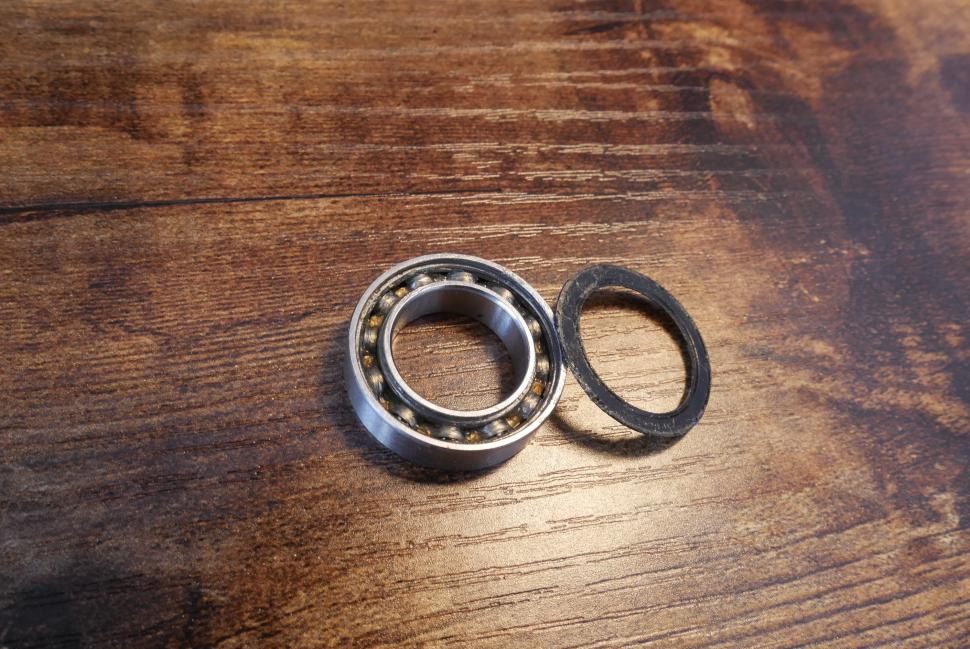
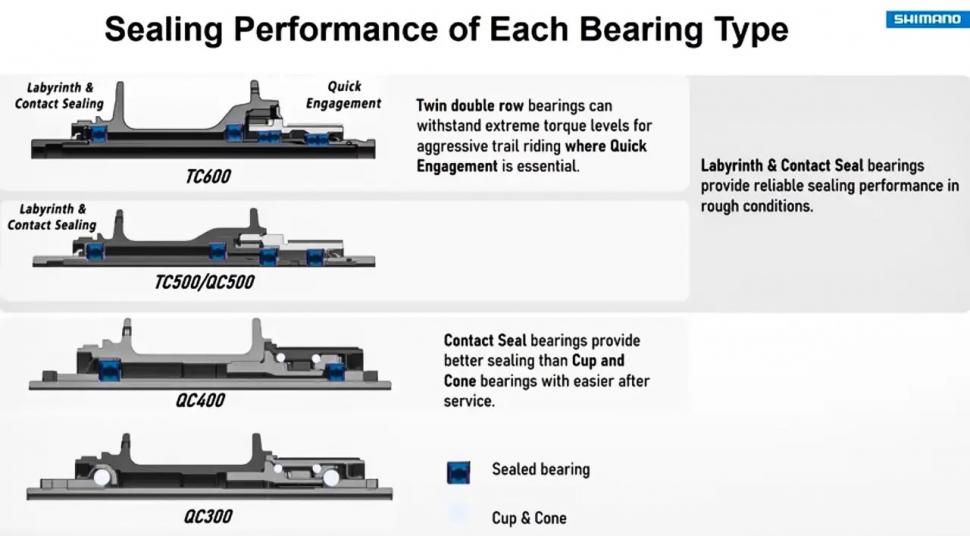
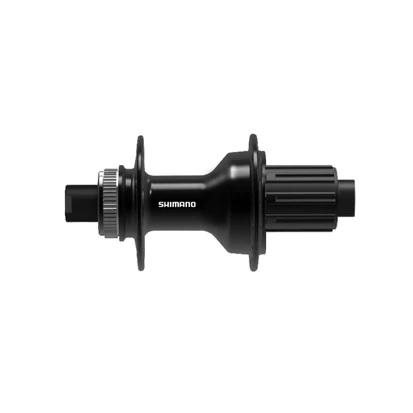
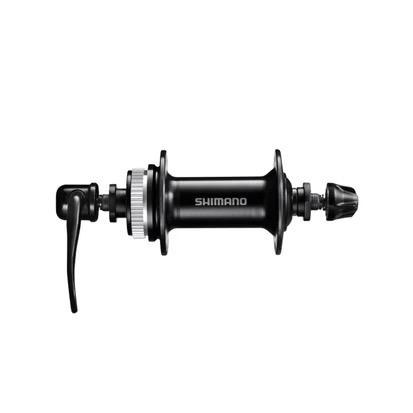
Add new comment
7 comments
Park Tools website has some excellent advice on getting the bearings loaded well.
I used to do it by feel, before I read their tips.
The newer big pipe Shimano hubs are a little more tricky as you have to remove the QR to use the hex key, but still very doable.
The seals have improved massively since I started.
I think the newer Shimano hubs are a work of genius! Removes any of the uncertainty/3 handedness of the cone spanner method but retains all the benefits of cup and cone.
Similar to higher end Fulcrum/Campag which has a ridiculously simple cup and cone system, no cone spanners required at all!
At long last. I've lost count of the number of completely destroyed (often Shimano!) hubs I've encountered on friends, relatives and 2nd hand bikes because they're never correctly adjusted or sufficiently greased when new. You can rarely get cone parts for basic hubs so many wheels are often ridden to landfill that could have been serviceable if they'd have had cartridge bearings.
My name is Mike and I am a fan of cup & cone bearings. There, I've said it. And I feel so free.
Mind you, although there is no better way to spend a wet Sunday morning than adjusting and cleaning your Shimanos, the standard of their cones has deteriorated a lot in the last few years. Once they would last many seasons but now seem to pit and deform within months. Probably due to disc brakes or helmets?
At least the cones are replaceable, once the cups go you are stuffed even on the higher end hubs. Campag's are replaceable but I hope to the workshop deities that I never have to confirm that.
Exactly, on low and medium hubs, the hardness doesn't seem to be there to avoid pitting from damaged bearings, and it is too easy to miss the signs that a ball bearing has failed, slowly scaring the cup. You can replace the bearings, but that scar means that they will prematurely wear and the wheel will not run as smoothly as it should.
For anyone who simply wants to pedal as opposed to race, I don't think the marginal gains of a cup and cone outweigh the maintenance benefits of sealed bearings. 10 years ago, cup and cone might have been a cheaper alternative for budget bikes and wheels, but I expect in the world of disc brakes, freehubs and thru-axles, cup and cone is even less attractive.
I'm a fan on cup and cone and if you look at the cross section of the hub you will see that the bearings in the cartridge are a lot smaller than those in the cup and cone.
The key notes here are 'easily maintained if you know what you are doing' and for years parts have been sold as having cartridge bearings as a benefit (so consumers often think cup and cone as lower quality).
These hubs are at the lower end of the scale so it probably makes sense here.